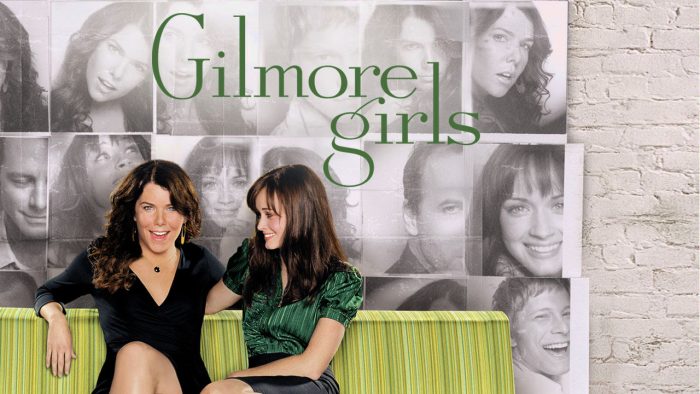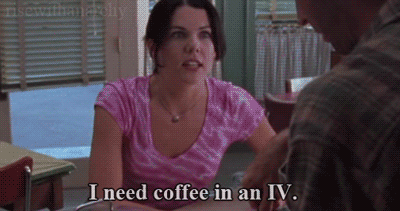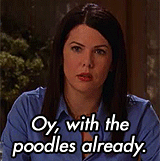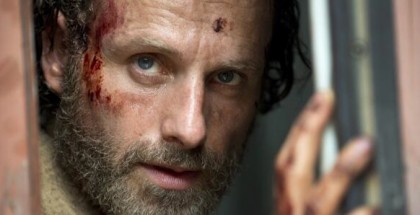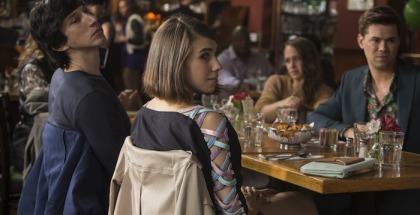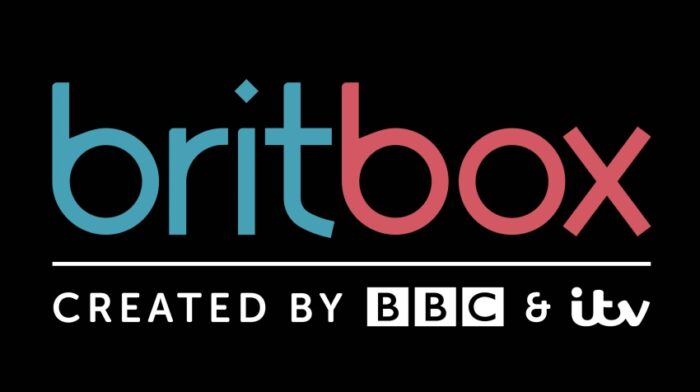Why you should be watching Gilmore Girls on Netflix UK
Helen Archer | On 01, Jul 2016
As Netflix screens all seven series of Gilmore Girls before the reunion airs, it’s time to acquaint – or reacquaint – yourself with the denizens of Stars Hollow. For the newbies, the programme follows single mother Lorelei (Lauren Graham), her brainy, high-achieving daughter, Rory (Alexis Bledel), and their friends, extended family, and the citizens of the small Connecticut town they inhabit.
But because that synopsis doesn’t really do it much justice, allow us to spell out just a few of the many, many (many) reasons for watching it.
1. The Script
Creator Amy Sherman-Palladino specialises in scripts that require rapid-fire delivery, harking back to the days of screwball comedy. Generally, one page of script accounts for one minute of screentime, but on Gilmore Girls? One page lasts 20 seconds. Fuelled by coffee and junk food, the characters fast-talk their way through life, in an unrelenting staccato burst of delivery, and it’s one of the reasons why re-watching proves such a rewarding experience: the viewer is bound to miss a wisecrack or five in the onslaught.
This is post-modern screwball – witty, self-referential and filled with pop cultural allusions – impossible to fully comprehend in one viewing, it’s the gift that just keeps giving. Both highbrow and lowbrow, the script takes on everything from Tolstoy to the Dukes of Hazzard via Jack Kerouac, RuPaul and Oprah, from the Menendez Brothers, Velvet Underground and A Streetcar Named Desire to Happy Days. And that’s just the first five minutes.
British popular culture is equally represented – Rory’s classmate Paris cites Neil Kinnock as her first girlhood crush, while Lorelei’s favourite cookery programme is Two Fat Ladies. The intertextual references have spawned their own YouTube supersets, with tumblr upon tumblr dedicated to spotting them, and web pages listing every book Rory ever read. It’s hard to comprehend how any actor could keep up with the pace of the writing – and it’s even more astounding when you realise that Bledel was a first-time actor whose only previous experience was as a non-speaking extra in Wes Anderson’s Rushmore. Which brings us to…
2. The Cast
The list of actors, musicians, politicians and writers who have appeared on Gilmore Girls over its seven seasons is so long you need to break them into subsections – it’d probably be easier to name the people who haven’t, at one stage, been on the show.
Older, established actors, such as Edward Hermann and Emily Bishop, are joined by newcomers, who, back in 2000, when the series first aired, were pretty much unknown – actors such as Melissa McCarthy, Adam Brody, Chad Michael Murray, Krysten Ritter and Matt Czuchry (before he was The Good Wife’s Cary Agos). All have recurring roles, but part of the joy in watching the show now is to spot the unknown actors who make one-off appearances. Jon Hamm pops up as a love interest for Lorelei in his pre-Donald Draper days, and, likewise, Nick Offerman can be seen in an early incarnation of his now infamous Ron Swanson persona.
Jane Lynch, Seth MacFarlane, and Max Greenfield appear too – but Gilmore Girls wasn’t just fertile ground for up-and-coming actors. Faces familiar to us in previous incarnations are featured in witty cameos, from John Kapalos (the janitor from the Breakfast Club, who interrogates Rory in a nod to the John Hughes film) to Traci Lords and Michael York, playing against type in later episodes. Twin Peaks is also represented via characters played by Sherilyn Fenn and Madchen Amik – both are love rivals of Lorelei – and there are even certain fan theories that Stars Hollow is a kind of parallel universe Twin Peaks, with both towns fuelled by coffee and pie and kookie weirdos (although, thankfully, with not so many brutal murders).
3. Stars Hollow
The place itself is one of the major stars of the show. While the mainstays of the town are Luke’s Diner, and the next door general store, Babette’s ballet school and the town hall are, too, heavily featured. But what lends the town its enduring appeal are the many, many festivals. All-encompassing and wide ranging, they’re an opportunity for the residents to get together as a community packed with weird and wonderful characters, and celebrate everything from knitting to hayrides, lunch baskets to pumpkin patches. Some of the more out-there gatherings are the backdrop to the most memorable episodes, like the dance marathon, the Founders Firelight Festival and the fan favourite Festival of Living Art.
4. The Bechdel Test
Gilmore Girls is a series that depicts close, loyal, sometimes complex, female friends and family, so it’s no surprise it passes the Bechdel test with flying colours. The show features women of all ages, shapes and sizes, who don’t fight with each other over men, but who have their own hopes and dreams and are constantly trying to fulfil their ambitions, be that running their own inn, becoming a foreign reporter, a drummer in a band, a new political force, or the best chef of your generation. Romantic complications are, of course, featured, but they are not ranked highest in the lives of the characters – family, education, nurturing talent and intelligence and long-lasting and fulfilling relationships are the focus. This is – even now, depressingly – quite a feat. In 2000, it was practically revolutionary. Which brings us, finally, to…
5. Serious Class Commentary / Check Yo Privilege
While Lorelei brought Rory up as a single, teenage mother, her parents were living not so far away in a lavish mansion. Her mother’s main hobby? Firing maids and hosting meetings for Daughters of the American Revolution. Her father? Making increasing amounts of money to keep his wife in fur coats. The clash of culture as Lorelei attempts to re-assimilate with Emily and Richard, while Rory finds her feet in the cloistered world of private school and Ivy league University, sees a culture clash in worlds of differing privilege. Rory, increasingly balancing the two parts of her family – juggling the hard-working, independent ethos of her mother, and the role of pampered, entitled granddaughter, and, later, girlfriend of the son of a media oligarch – means that this is a programme that, just beneath the surface, is asking real questions about the value of money and connections. It’s bittersweet, but Gilmore Girls does wrestle with questions of class and entitlement in a mature and thoughtful way, adding depth and shade to what has turned out to be one of the most enduring TV programmes of the 2000s.
We could go on, listing more of the many (many) reasons and naming countless episodes, but you get the picture, right?
Gilmore Girls: A Year in the Life is now exclusively on Netflix UK, as part of an £9.99 monthly subscription. Seasons 1 to 7 are also available.


